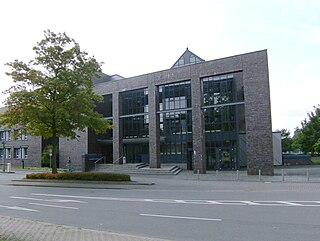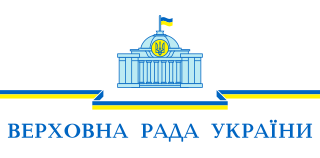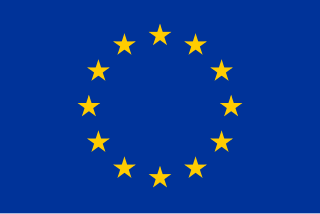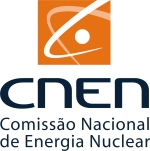 W
WThe Bundesamt für Strahlenschutz (BfS) is the German Federal Office for Radiation Protection. The BfS was established in November 1989; the headquarters is located in Salzgitter, with branch offices in Berlin, Bonn, Freiburg, Gorleben, Oberschleißheim and Rendsburg. It has 708 employees and an annual budget of around 305 million Euro (2009). Since 2009 the BfS is also responsible for the storage site of radioactive waste, Schacht Asse II.
 W
WThe Committee of the Verkhovna Rada of Ukraine on Environmental Policy, Nature Resources Utilization and Elimination of the Consequences of Chornobyl Catastrophe is a standing committee of the Verkhovna Rada, Ukraine's unicameral parliament. The committee consists of 15 people's deputies in the parliament's 8th convocation. Its entire composition was approved on December 4, 2014.
 W
WThe Environmental Protection Agency (EPA) is responsible for protecting and improving the environment as a valuable asset for the people of Ireland. It operates independently under the Department of the Environment, Climate and Communications.
 W
WThe European Atomic Energy Community is an international organisation established by the Euratom Treaty on 25 March 1957 with the original purpose of creating a specialist market for nuclear power in Europe, by developing nuclear energy and distributing it to its member states while selling the surplus to non-member states. However, over the years its scope has been considerably increased to cover a large variety of areas associated with nuclear power and ionising radiation as diverse as safeguarding of nuclear materials, radiation protection and construction of the International Fusion Reactor ITER.
 W
WThe Federal Ministry of the Environment, Nature Conservation and Nuclear Safety, abbreviated BMU, is a cabinet-level ministry of the Federal Republic of Germany. It has branches in Bonn and Berlin.
 W
WThe Bundesamt für Strahlenschutz (BfS) is the German Federal Office for Radiation Protection. The BfS was established in November 1989; the headquarters is located in Salzgitter, with branch offices in Berlin, Bonn, Freiburg, Gorleben, Oberschleißheim and Rendsburg. It has 708 employees and an annual budget of around 305 million Euro (2009). Since 2009 the BfS is also responsible for the storage site of radioactive waste, Schacht Asse II.
 W
WThe Ghana Atomic Energy Commission (GAEC) is the state organization in Ghana involved with surveillance of the use of nuclear energy in Ghana. It is similar in aim to the Ghana Nuclear Society (GNS), with the difference being that the GNS is a nonprofit organisation, whereas the GAEC is part of the parliament of Ghana. Its primary objectives were set out by the parliament act 588, which involve investigating the use of nuclear energy for Ghana and supporting research and development both in Ghana and abroad.
 W
WThe International Commission on Non-Ionizing Radiation Protection (ICNIRP) is an international commission specialized in non-ionizing radiation protection. The organization's activities include determining exposure limits for electromagnetic fields used by devices such as cellular phones.
 W
WForschungszentrum Jülich is a member of the Helmholtz Association of German Research Centres and is one of the largest interdisciplinary research centres in Europe. It was founded on 11 December 1956 by the state of North Rhine-Westphalia as a registered association, before it became "Kernforschungsanlage Jülich GmbH" or Nuclear Research Centre Jülich in 1967. In 1990, the name of the association was changed to "Forschungszentrum Jülich GmbH". It has close collaborations with RWTH Aachen in the form of Jülich-Aachen Research Alliance (JARA).
 W
WThe National Commission for Radiation Protection of Ukraine (NCRPU) is a permanent independent collegial supreme scientific expert advisory and consultative body to the Verkhovna Rada on matters of radiation protection and radiation safety of Ukraine. Its composition is being coordinated through the National Academy of Sciences of Ukraine.
 W
WThe National Nuclear Energy Commission is the Brazilian government agency responsible for orientation, planning, supervision, and control of the Brazil's nuclear program. The agency was created on 10 October 1956. The CNEN is under the direct control of the Ministry of Science and Technology.
 W
WNorwegian Radiation Protection Authority is a Norwegian public agency under the Ministry of Health and Care Services headquartered in Østerås, Bærum municipality, Greater Oslo Region. It works as an authority in the area of radiation protection and nuclear safety. NRPA falls under the Ministry of Health and Care Services, but serves all ministries and departments on issues relating to radiation.
 W
WThe Nuclear Emergency Support Team (NEST), formerly known as the Nuclear Emergency Search Team, is a team of scientists, technicians, and engineers operating under the United States Department of Energy's National Nuclear Security Administration (NNSA). Their task is to be "prepared to respond immediately to any type of radiological accident or incident anywhere in the world".
 W
WThe Nuclear Energy Agency (NEA) is an intergovernmental agency that is organized under the Organisation for Economic Co-operation and Development (OECD). Originally formed on 1 February 1958 with the name European Nuclear Energy Agency (ENEA)—the United States participated as an Associate Member—the name was changed on 20 April 1972 to its current name after Japan became a member.
 W
WPacific Northwest National Laboratory (PNNL) is one of the United States Department of Energy national laboratories, managed by the Department of Energy's (DOE) Office of Science. The main campus of the laboratory is in Richland, Washington.
 W
WThe Physikalisch-Technische Bundesanstalt (PTB) is the national metrology institute of the Federal Republic of Germany, with scientific and technical service tasks. It is a higher federal authority and a public-law institution directly under federal government control, without legal capacity, under the auspices of the Federal Ministry for Economic Affairs and Energy.
 W
WSafecast is an international, volunteer-centered organization devoted to open citizen science for environmental monitoring. Safecast was established by Sean Bonner, Pieter Franken, and Joi Ito shortly after the Fukushima Daiichi nuclear disaster in Japan, following the Tōhoku earthquake on 11 March 2011 and manages a global open data network for ionizing radiation and air quality monitoring.
 W
WSCK CEN, until 2020 shortened as SCK•CEN, is the Belgian nuclear research centre located in Mol, Belgium, more specifically near the township of Donk. SCK CEN is a global leader in the field of nuclear research, services, and education.
 W
WThe Society for Radiological Protection is the leading UK professional body promoting learning and skills in the field of Radiological Protection. The Society was formed in 1963, and received its Royal Charter in 2007. It has the overall objectives of improving public knowledge and maintaining professional standards in that field. It is the largest society of its kind in Europe, and second largest in the world.
 W
WThe Spiez Laboratory is the Swiss institute for the protection of the population against nuclear, biological and chemical threats and dangers. It is part of the Federal Department of Defence, Civil Protection and Sports (DDPS) and is located in Spiez. The Spiez Laboratory is one of the five labs in the world permanently certified by the Organisation for the Prohibition of Chemical Weapons.
 W
WThe Swiss Federal Nuclear Safety Inspectorate is Switzerland's regulatory supervisory authority for nuclear safety and for the security of nuclear installations; it supervises the nuclear power plants at Beznau, Gösgen, Leibstadt and Mühleberg, the research reactors at the Paul Scherrer Institute, the University of Basel and the Swiss Federal Institute of Technology, as well as the Swiss national central interim storage facility for radioactive waste (ZWILAG). ENSI's headquarters are located in Brugg in the Canton of Aargau.
 W
WThe United Nations Scientific Committee on the Effects of Atomic Radiation (UNSCEAR) was set up by resolution of the United Nations General Assembly in 1955. 21 states are designated to provide scientists to serve as members of the committee which holds formal meetings (sessions) annually and submits a report to the General Assembly. The organisation has no power to set radiation standards nor to make recommendations in regard to nuclear testing. It was established solely to "define precisely the present exposure of the population of the world to ionizing radiation." A small secretariat, located in Vienna and functionally linked to the UN Environment Program, organizes the annual sessions and manages the preparation of documents for the Committee's scrutiny.
 W
WVietnam Atomic Energy Commission is an agency under The Ministry of Science and Technology of Vietnam government with mission of studying formulation of policies, strategies, planning and plans for atomic energy development in Vietnam; conducting fundamental and applied research on nuclear science and technology, nuclear reactor technology, nuclear reactor fuel and material, radiation protection and nuclear safety, radioactive waste treatment and management technology.